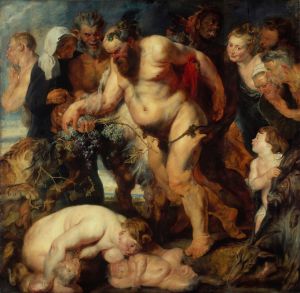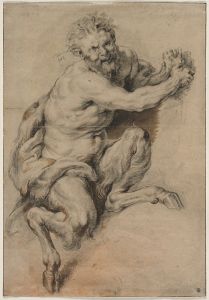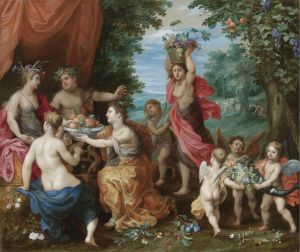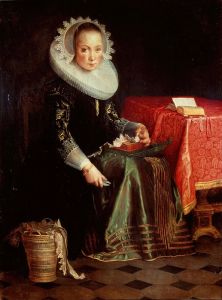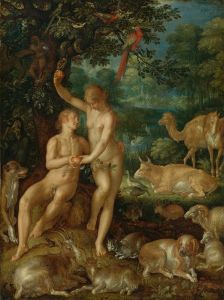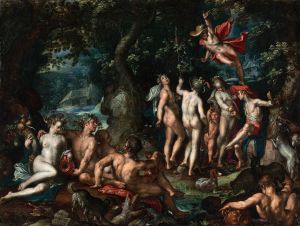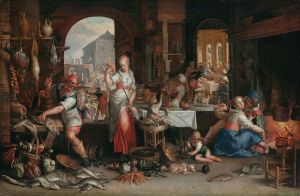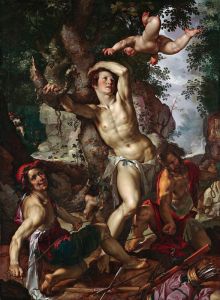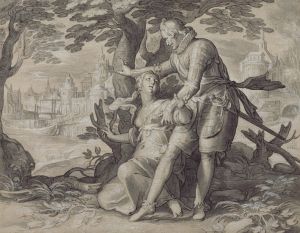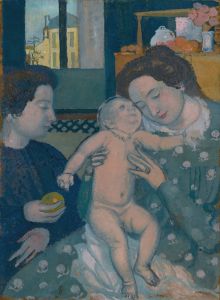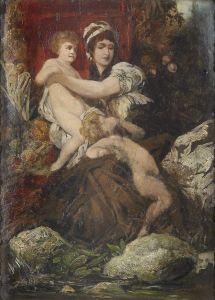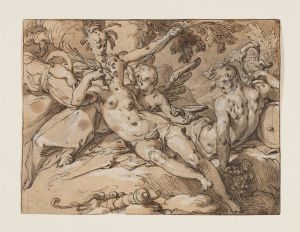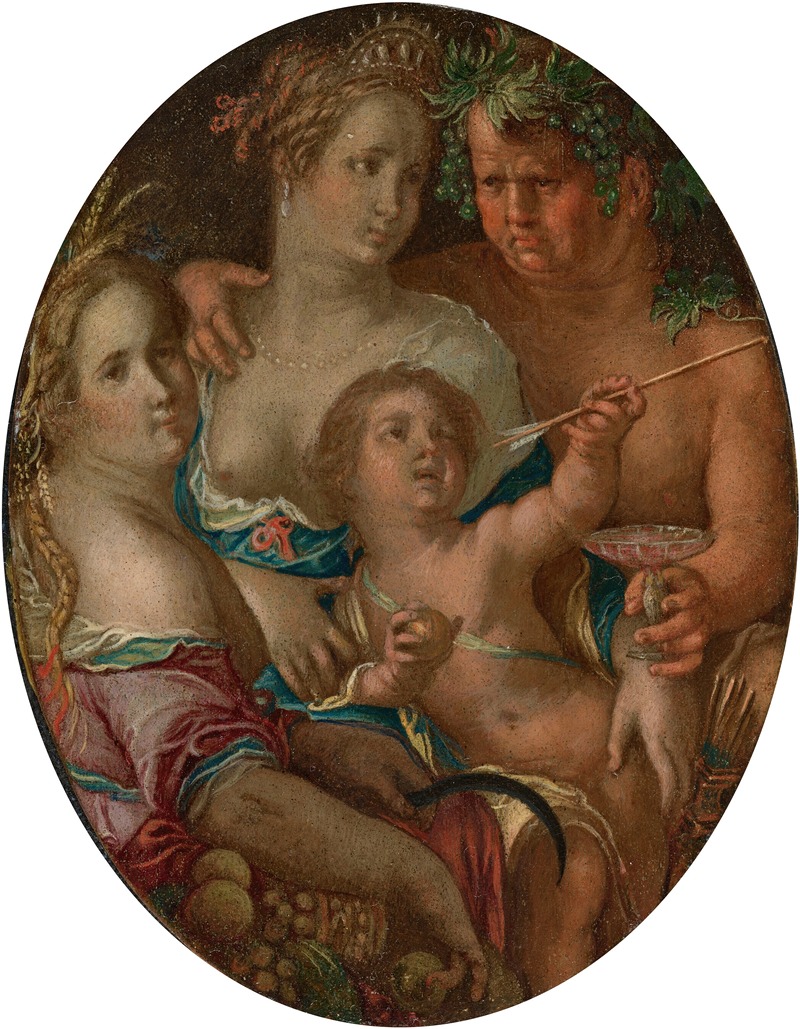
Venus, Cupid, Bacchus and Ceres
A hand-painted replica of Joachim Wtewael’s masterpiece Venus, Cupid, Bacchus and Ceres, meticulously crafted by professional artists to capture the true essence of the original. Each piece is created with museum-quality canvas and rare mineral pigments, carefully painted by experienced artists with delicate brushstrokes and rich, layered colors to perfectly recreate the texture of the original artwork. Unlike machine-printed reproductions, this hand-painted version brings the painting to life, infused with the artist’s emotions and skill in every stroke. Whether for personal collection or home decoration, it instantly elevates the artistic atmosphere of any space.
"Venus, Cupid, Bacchus and Ceres" is a painting created by the Dutch Mannerist artist Joachim Wtewael (also spelled Uytewael) in 1606. Wtewael, known for his intricate compositions and vibrant use of color, was a prominent figure in the Utrecht school of painting during the late 16th and early 17th centuries. This work is a prime example of his mastery of the Mannerist style, characterized by elongated figures, complex poses, and a heightened sense of drama.
The painting depicts four mythological figures: Venus, the Roman goddess of love; Cupid, her son and the god of desire; Bacchus, the god of wine and revelry; and Ceres, the goddess of agriculture and fertility. The scene is imbued with sensuality and allegorical meaning, reflecting themes of love, indulgence, and abundance. The figures are arranged in a dynamic composition, with their poses and gestures creating a sense of movement and interaction. Wtewael’s attention to detail is evident in the intricate rendering of textures, such as the softness of flesh, the sheen of fabrics, and the lushness of the surrounding foliage.
The painting is executed in oil on copper, a medium that Wtewael frequently used. Copper provided a smooth surface that allowed for fine detail and vibrant colors, both of which are hallmarks of Wtewael’s work. The small scale of the painting suggests that it was intended for a private collector or as part of a cabinet of curiosities, a popular trend among wealthy patrons during the Dutch Golden Age.
"Venus, Cupid, Bacchus and Ceres" is notable for its playful and somewhat provocative tone, a characteristic feature of Wtewael’s mythological works. The interaction between the figures, combined with the rich symbolism, invites viewers to contemplate the relationships between love, pleasure, and sustenance. The painting also reflects the broader cultural and intellectual currents of the time, including the revival of classical mythology and the exploration of humanist themes.
Today, the painting is housed in the Los Angeles County Museum of Art (LACMA), where it is part of the museum’s European art collection. It continues to be celebrated as an exemplary work of Dutch Mannerism and a testament to Wtewael’s artistic skill and imagination.






